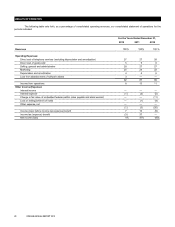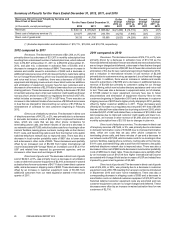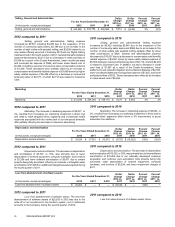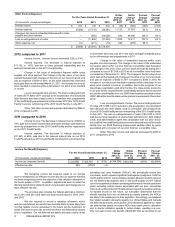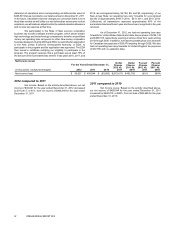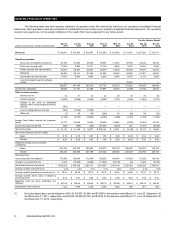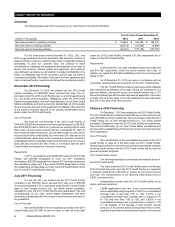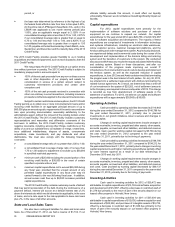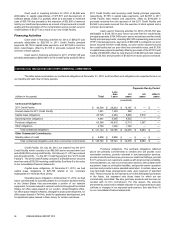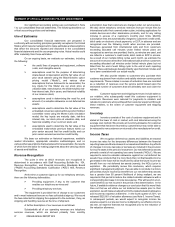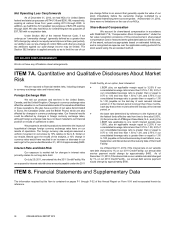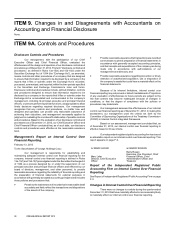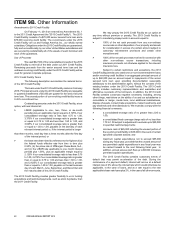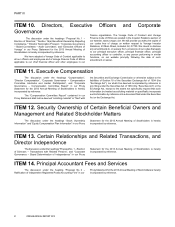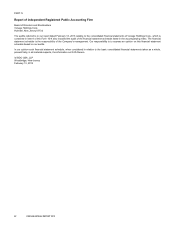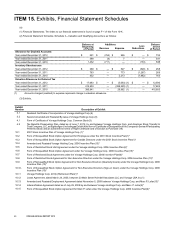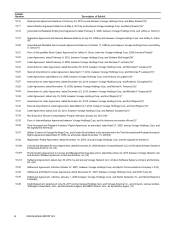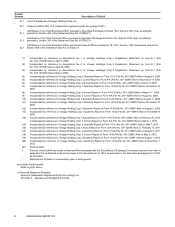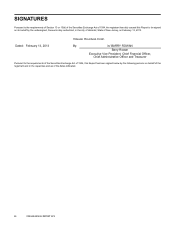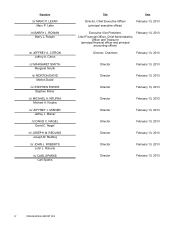Vonage 2012 Annual Report Download - page 43
Download and view the complete annual report
Please find page 43 of the 2012 Vonage annual report below. You can navigate through the pages in the report by either clicking on the pages listed below, or by using the keyword search tool below to find specific information within the annual report.
37 VONAGE ANNUAL REPORT 2012
SUMMARY OF CRITICAL ACCOUNTING POLICIES AND ESTIMATES
Our significant accounting policies are summarized in Note
1 to our consolidated financial statements. The following describes our
critical accounting policies and estimates:
Use of Estimates
Our consolidated financial statements are prepared in
conformity with accounting principles generally accepted in the United
States, which require management to make estimates and assumptions
that affect the amounts reported and disclosed in the consolidated
financial statements and the accompanying notes. Actual results could
differ materially from these estimates.
On an ongoing basis, we evaluate our estimates, including
the following:
> the useful lives of property and equipment, software
costs, and intangible assets;
> assumptions used for the purpose of determining
share-based compensation and the fair value of our
prior stock warrant using the Black-Scholes option
pricing model (“Model”), and various other
assumptions that we believed to be reasonable; the
key inputs for this Model are our stock price at
valuation date, exercise price, the dividend yield, risk-
free interest rate, life in years, and historical volatility
of our common stock;
> assumptions used in determining the need for, and
amount of, a valuation allowance on net deferred tax
assets;
> assumptions used to determine the fair value of the
embedded conversion option within our prior third lien
convertible notes using the Monte Carlo simulation
model; the key inputs are maturity date, risk-free
interest rate, our stock price at valuation date, and
historical volatility of our common stock; and
> assumptions used to determine the fair value of the
embedded make-whole premium feature within our
prior senior secured first lien credit facility and our
prior senior secured second lien credit facility.
We base our estimates on historical experience, available
market information, appropriate valuation methodologies, and on
various other assumptions that we believed to be reasonable, the results
of which form the basis for making judgments about the carrying values
of assets and liabilities.
Revenue Recognition
The point in time at which revenues are recognized is
determined in accordance with Staff Accounting Bulletin No. 104,
Revenue Recognition, and Financial Accounting Standards Board
(“FASB”) Accounting Standards Codification (“ASC”) 605, Revenue
Recognition.
At the time a customer signs up for our telephony services,
there are the following deliverables:
> Providing equipment, if any, to the customer that
enables our telephony services and
> Providing telephony services.
The equipment is provided free of charge to our customers
and in most instances there are no fees collected at sign-up. We record
the fees collected for shipping the equipment to the customer, if any, as
shipping and handling revenue at the time of shipment.
A further description of our revenues is as follows:
Substantially all of our operating revenues are telephony
services revenues, which are derived primarily from monthly
subscription fees that customers are charged under our service plans.
We also derive telephony services revenues from per minute fees for
international calls if not covered under a plan, including applications for
mobile devices and other stand-alone products, and for any calling
minutes in excess of a customer’s monthly plan limits. Monthly
subscription fees are automatically charged to customers’ credit cards,
debit cards or electronic check payments, or ECP, in advance and are
recognized over the following month when services are provided.
Revenues generated from international calls and from customers
exceeding allocated call minutes under limited minute plans are
recognized as services are provided, that is, as minutes are used, and
are billed to a customer’s credit cards, debit cards or ECP in arrears.
As a result of our multiple billing cycles each month, we estimate the
amount of revenues earned from international calls and from customers
exceeding allocated call minutes under limited minute plans but not
billed from the end of each billing cycle to the end of each reporting
period. These estimates are based primarily upon historical minutes and
have been consistent with our actual results.
We also provide rebates to customers who purchase their
customer equipment from retailers and satisfy minimum service period
requirements. These rebates in excess of activation fees are recorded
as a reduction of revenues over the service period based upon the
estimated number of customers that will ultimately earn and claim the
rebates.
Customer equipment and shipping revenues include sales to
our retailers, who subsequently resell this customer equipment to
customers. Revenues were reduced for payments to retailers and
rebates to customers, who purchased their customer equipment through
these retailers, to the extent of customer equipment and shipping
revenues.
Inventory
Inventory consists of the cost of customer equipment and is
stated at the lower of cost or market, with cost determined using the
average cost method. We provide an inventory allowance for customer
equipment that has been returned by customers but may not be able to
be reissued to new customers or returned to the manufacturer for credit.
Income Taxes
We recognize deferred tax assets and liabilities at enacted
income tax rates for the temporary differences between the financial
reporting bases and the tax bases of our assets and liabilities. Any effects
of changes in income tax rates or tax laws are included in the provision
for income taxes in the period of enactment. Our net deferred tax assets
primarily consist of net operating loss carry forwards (“NOLs”). We are
required to record a valuation allowance against our net deferred tax
assets if we conclude that it is more likely than not that taxable income
generated in the future will be insufficient to utilize the future income tax
benefit from our net deferred tax assets (namely, the NOLs) prior to
expiration. We periodically review this conclusion, which requires
significant management judgment. If we are able to conclude in a future
period that a future income tax benefit from our net deferred tax assets
has a greater than 50 percent likelihood of being realized, we are
required in that period to reduce the related valuation allowance with a
corresponding decrease in income tax expense. This will result in a non-
cash benefit to our net income in the period of the determination. In the
future, if available evidence changes our conclusion that it is more likely
than not that we will utilize our net deferred tax assets prior to their
expiration, we will make an adjustment to the related valuation allowance
and income tax expense at that time. In the fourth quarter of 2011, we
released $325,601 of valuation allowance (see Note 5. Income Taxes).
In subsequent periods, we would expect to recognize income tax
expense equal to our pre-tax income multiplied by our effective income
tax rate, an expense that was not recognized prior to the reduction of
the valuation allowance.



